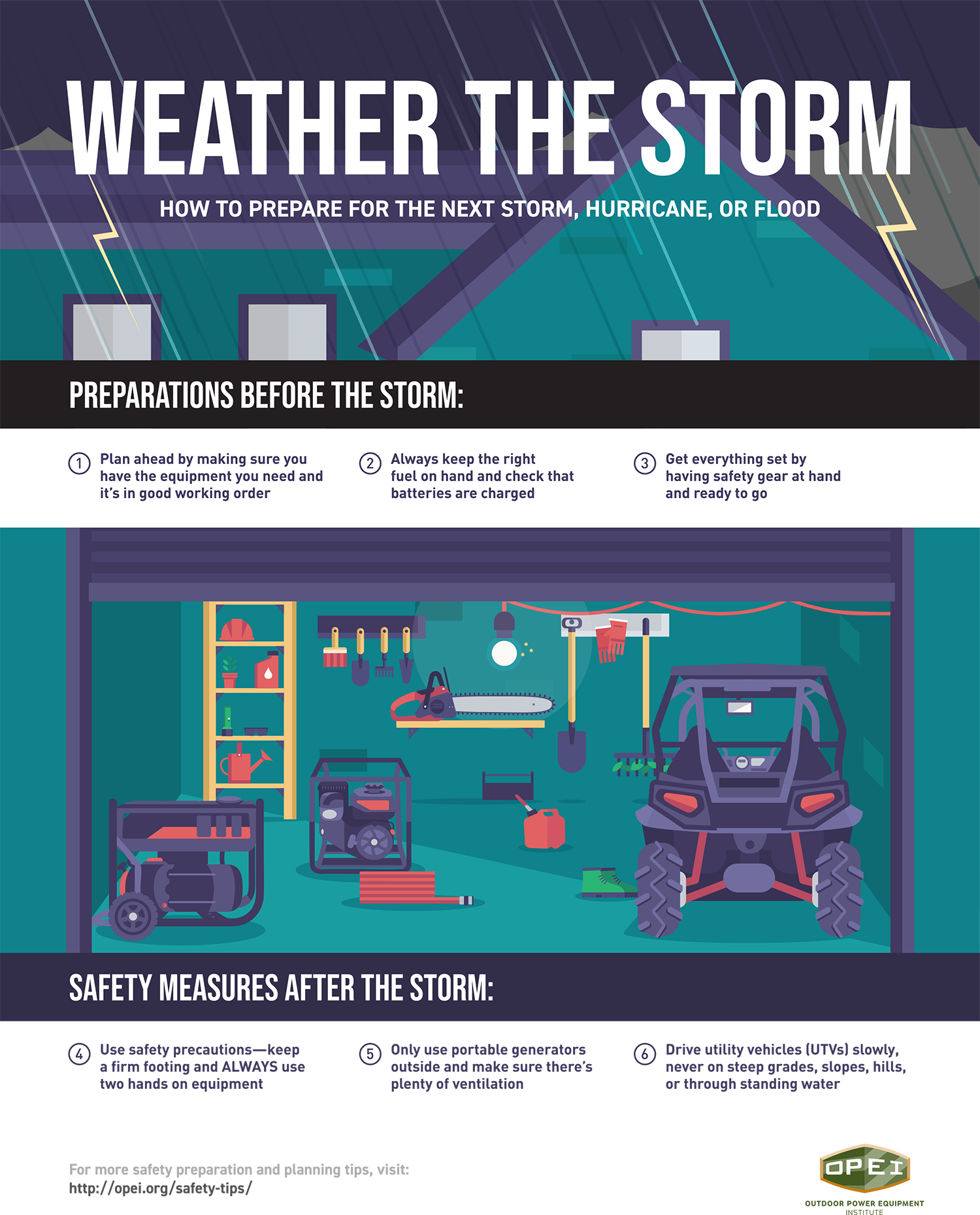How to protect your home from extreme weather this fall
With homeownership comes the the need for preparedness in case of extreme weather. Depending on the part of the country you live in, hail, hurricanes or flooding can wreak havoc on your day and make it necessary to carry additional insurance policies to make sure you are fully protected no matter what Mother Nature throws at you.
The Outdoor Power Equipment Institute is an international trade association working with power equipment manufactures around the world, and they are the foremost experts on helping home and business owners protect their assets. These tips from OPEI can help you ensure your home is protected from extreme weather.
Take the time now to prepare for the upcoming winter an ensure your home is fully protected no matter what kind of weather heads your way this fall.
How to protect your home from stormy weather
Plan out what kind of equipment and tools you need to repair your home.
Survey your property. Consider the damage a storm might cause and make a list of what tools might be needed to weather the storm or make repairs afterwards. You might need a chainsaw, pole pruner, generator, or UTV. Take time to think through a strategy for clean-up efforts.
While the weather is good, make sure everything is in working order.
Make sure all equipment is in good working order. Check snowblowers, generators, chainsaws and anything else you might need in your particular area. If necessary, take your equipment to an authorized service center for maintenance or repair. There is nothing worse than trying to use something for the first time in the season and discovering it is broken.
Create an emergency repair Go Box
Avoid the scramble for sturdy shoes, safety goggles, hard hats, reflective clothing, flashlights with working batteries and work gloves. Round them up now and store them in an accessible area with your equipment.
Stock the correct kind of fuel and charge any batteries
Gas stations may be closed after a storm, so it’s important to have the proper fuel for your equipment. Store your fuel in an approved container. Use the type of fuel recommended by your equipment manufacturer. It is illegal to use any fuel with more than 10% ethanol in outdoor power equipment (for more information on proper fueling for outdoor power equipment visit www.LookBeforeYouPump.com).
Ensure that everyone in your home, including children, understands basic safety precautions
There are some fundamental safety tips everyone should follow year-round. For instance, observe the safety zone, which means keeping bystanders and power lines (those above you and any that might have fallen down) at least 50 feet away from your work area. Also, if using a chainsaw, understand kickback, which may happen when the moving chain at the tip of the guide bar touches an object, or when the wood closes in and pinches the saw chain in the cut. Always stand with your weight on both feet, and adjust your stance so you are angled away from the blade. Hold the chainsaw with both hands. Never over-reach or cut anything above your shoulder height. Always have a planned retreat path if something falls.
If you have a portable generator, make sure you know to use it safely and have a place outside for it to run
Generators should never be used in an enclosed area or placed inside a home or garage, even if the windows or doors are open. Place the generator outside and away from windows, doors, and vents that could allow carbon monoxide to come indoors. It should have plenty of ventilation. Keep the generator dry and do not use it in rainy or wet conditions. Before refueling, turn the generator off and let it cool down.
